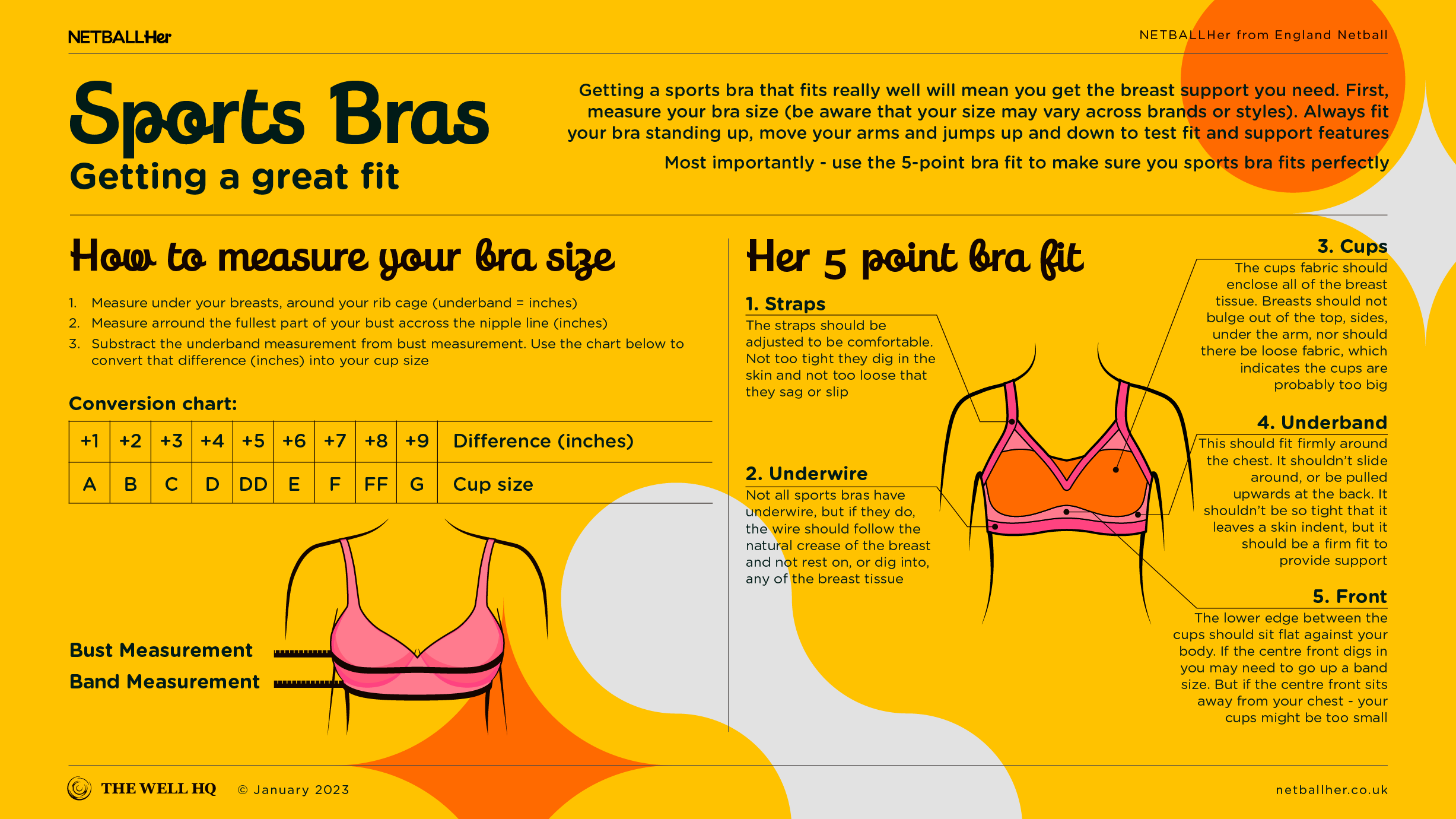Click play for an audio readthrough of this article
During exercise and sport our breasts are more vulnerable than we appreciate
Breasts are composed of fatty tissue with only skin and a small amount of connective tissue for protection. Given their location, weight and sensitivity, it’s almost like we’ve been dealt a short hand when it comes to protecting them; certainly compared to other parts of our anatomy.
From frictional injuries and chafing, to direct impact in contact and ball sports, we all need to be aware how to protect our bodies and stay abreast (‘scuse the pun) with the latest research and product breakthroughs.
Breast injuries are almost certainly under-represented in sports injury research to-date; largely because athletes don’t report them. Women don’t often consider it significant enough to report or seek treatment for a bash to the boob, or a skin injury caused by a poorly fitting bra. So the data we have on breast injuries in sport is skewed and that plays into a lack of awareness at even the highest levels.
Cause and effect
Soft tissue injuries to the breast – often the result of a knock or a bump – can mean bruising, swelling and pain. That’s one thing. But particularly traumatic breast injuries could impact a breast’s fatty fibrous tissue and lead to a change in its shape and / or the appearance of lumps.
Aesthetically this isn’t ideal, but even more concerning is that these lumps, though not dangerous themselves, could hide ones which are. Down the track, impact lumps can be difficult to differentiate from cancerous lumps and a player may need to undergo especially extensive and invasive tests to get the correct diagnosis.
We refer to harsher injuries as trauma, but it’s important to understand what trauma means here. You don’t have to take a gunshot to the boob for it to be considered traumatic – the bar is a lot lower than that. In fact, quite often women showing signs of fat necrosis (the lumps that can form in the breast after an injury) can’t remember when or how the injury occurred.
In netball, the many balls and elbows that collide with a player’s breasts – or when we land chest-down on the floor – can all cause significant breast injury.
For younger players, one or more significant impact blows to the breast bud (early breast tissue which develops roughly two years prior to her periods starting) increases the risk of breast asymmetry. Sure, some variation in breast size is normal, in fact it’s common, but a large variation at a younger age can easily lead to body image concerns, and a lack of body confidence.
Lots of girls enjoy netball from an early age, when their bodies are developing so the potential for direct impact injuries means we need to ask a serious question: are we sending girls out to play with the right equipment and protective gear?
Protection, prevention
To clarify: there is currently no evidence suggesting breast injury at this level leads to consequences more sinister than those already outlined here. But even so, it’s worth considering the damage to a woman’s confidence, no matter her age, if she has lumps in her breast(s). There’s the self-esteem aspect, and there’s the emotional impact of worrying that such lumps could be serious. All this can be avoided with the right protection.
Research by the Australian Institute of Sport shows that over one-third of elite female athletes said they’ve experienced either contact or frictional breast injuries during sport. Even more sobering, a fifth of these same athletes recognised that their injuries negatively impacted performance – yet most did not report their issue to a coach or medical professional.
The study showed that a significant portion (21%) of elite female athletes have suffered breast injury, but there’s a massive disconnect: just 3% said they wear any padding or protection.
Astonishingly, for one in ten elite athletes, the protection-of-choice against breast injury was modifying movement: changing playing or running style, avoiding tackles, and even placing hands or arms in front of their breasts as a shield.
It’s hard to quantify the impact of that but one thing’s for sure: the player preoccupied with shielding her breasts ain’t 100% focussed on her netball. Not at that moment, certainly.
Into action
Cultural change
En route to progress, the first change is cultural. We have to normalise conversations around breast health and encourage athletes to report breast injuries. For one, this’d help to drive awareness, but it’d also put pressure on researchers and decision-makers to develop more effective products and breast injury prevention strategies.
For skin injuries
Dealing directly with abrasions and skin injuries is simpler. Nearly always, such injuries are caused by poorly-fitting bras: underbands that are too tight, cups that are too small … more women than you think wear two bras when playing sport. In basic terms, the reason we get rubbing and chaffing is that we haven’t found the right bra. The action here is don’t settle for discomfort.
Impact injuries
For impact injuries, there are some products on the market now developed to protect breasts. For example, Boob Armour is an Australian brand which recently launched in the UK.
Boob Armour inserts into a sports bra and provides protection from the consequences of breast impact. It’s currently the only licensed breast protection equipment for Basketball Australia, and is used widely in court sports of all kinds.
Boob Armour came together as a company after founder Suzie Betts discovered lumps in her breasts. A stressful time, it was only when her consultant explained how impact bruising in the breast can lead to the formation of nodules / lumps that mimic breast cancer cells.
If you suffer a breast injury during netball:
- If it’s abrasion, rubbing or chaffing, check your bra fit, and that you are wearing a supportive enough style of bra for your breast size. If sweat is adding to the problem, find a bra with wicking fabric and cutouts in the fabric design for ventilation.
- Don’t suffer in silence, tell someone if you need to. At the very least, sharing the experience normalises the conversations we should be having about breast health.
- The symptoms of breast impact usually heal on their own after a few days.
- If you have a persistent lump or pain in your breast seek medical advice.
- Consider preventing breast injury by using a breast protector.
As a reminder, the content of the course belongs to The Well HQ. You have permission to access and use the content yourself or, if you are an organisation, for the number of users selected, but are not otherwise permitted to share such content with others, all in accordance with our Course Terms and Conditions.

